Day in the Life of a Project Manager: Drawing Conclusions From Chaos
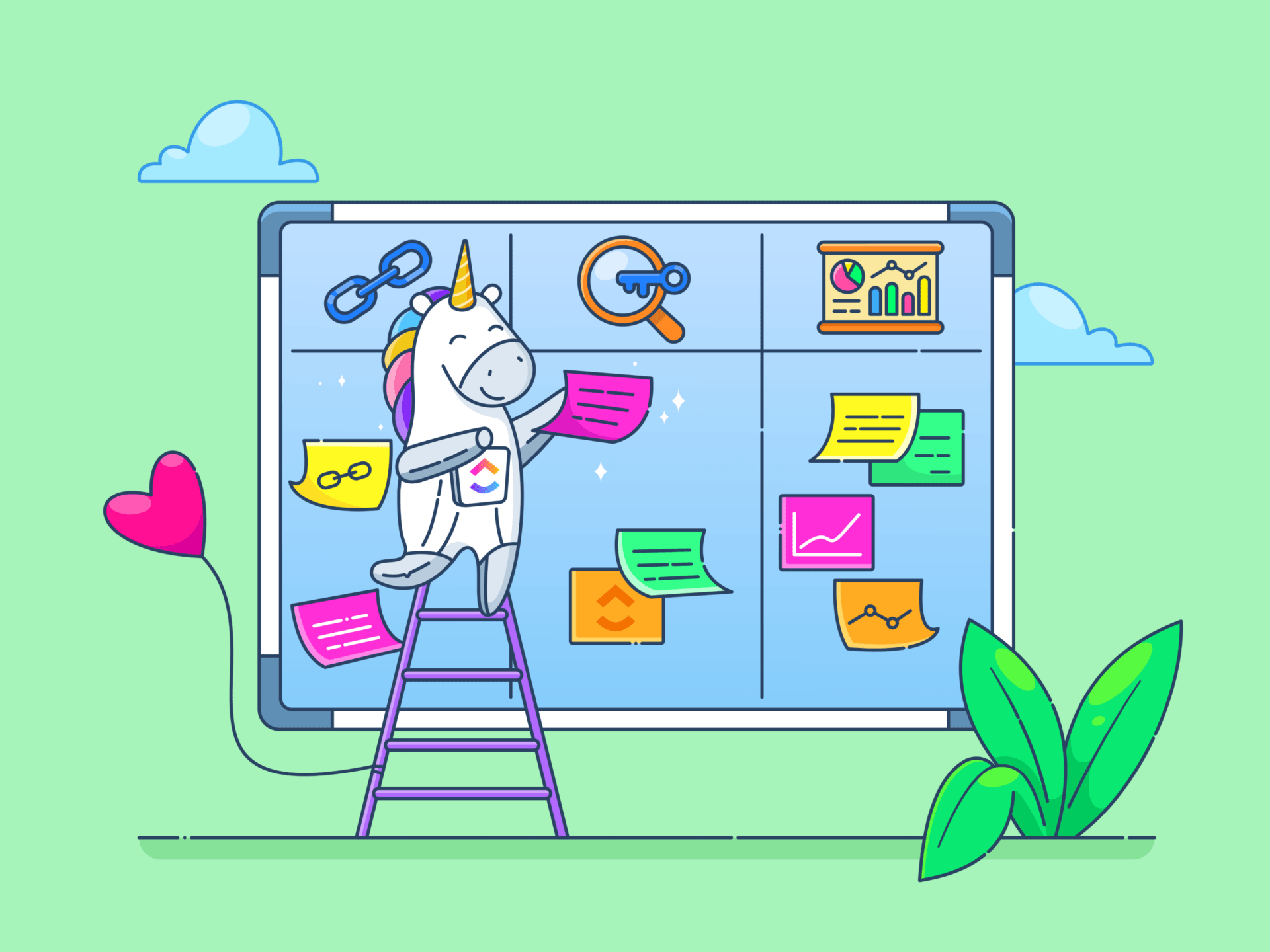
Sorry, there were no results found for “”
Sorry, there were no results found for “”
Sorry, there were no results found for “”
Project management is a complex endeavor that requires skills, an understanding of complex deliverables, and people management. If project management can be likened to a ship sailing in stormy waters, then a project manager is the ship’s captain.
Project managers need to navigate client expectations while managing resources and meeting deadlines. Project managers chart the course of the project, anticipate and manage crises, deal with complexities, and instruct and motivate the team to keep the project going.
In short, a day in the life of a project manager is nothing short of a thrilling adventure. So, keep reading if you’re curious to learn more about what project managers do, a typical day in their lives, and the challenges they face on a day-to-day basis.
We’ll also share a few practical tips and tricks for project managers and a list of handy tools to ensure your expedition stays on course and achieves its objectives!
A project manager is a professional responsible for planning, executing, managing, and closing projects. As such, a project manager plays a critical role throughout the project life cycle— specifically in ensuring that the project does not stray from its scope, budget, and timeline.
The roles and responsibilities of a project manager may vary depending on the nature of the project, the industry, the organizational structure, and other such variables. That said, they are predominantly involved in:
Develop a comprehensive project plan that outlines the proposals, tasks, subtasks, timelines, and resources. Consult with key stakeholders to finalize details, documenting them in a comprehensive project plan comprising scope, objectives, budget, and deliverables
Assemble a project team to take on the project. Assign team leaders and delegate work and responsibilities to them. Additionally, address broader project-level concerns and keep the team motivated to achieve the business goals
Ensure seamless and effective communication between team members, project sponsors, and other stakeholders. Share regular updates on the project status, progress, milestones, and setbacks
Identify potential risks or issues and develop risk mitigation strategies to address or overcome them; anticipate changes and implement a smooth change management plan to ensure that it does not cause any disruptions
Develop a detailed project budget with adequate buffers and margins; match resources to the allocated budget, and monitor expenses to prevent overspending or wasteful expenditure
Identify performance metrics or formulate guidelines to standardize the quality of project deliverables; conduct routine and regular quality assessment checks to ensure that the project deliverables adhere to the established and agreed-upon parameters
Develop a project schedule at the project and task levels; identify dependencies and the critical path to eliminate avoidable delays. Maintain this schedule and orchestrate activities to ensure that all tasks are completed on time

Identify and engage with internal and external key stakeholders; address any concerns or honor reasonable stakeholder requests to enhance satisfaction levels
Resolve issues that may crop up during the project lifecycle; embrace an innovative and problem-solving mindset to identify strategies that can enhance the project value
Test the project to verify whether it meets the prescribed standards or specifications; closing gaps, if any
Document every stage of the project development process, from start to finish; share such files, documents, checklists, daily progress report meeting notes, etc., with the stakeholders concerned; prepare a detailed case study of the key highlights and learnings upon project closure
Ensure a smooth project closure. This includes any handover or knowledge transfer while delivering the project to the owner
As the roles and responsibilities of a project manager vary from organization to organization, the day-to-day activities differ significantly from project manager to project manager.
For instance, a day in the life of a project manager working remotely will vastly differ from that of a manager working in an office.
Similarly, an IT project manager in the software development sector will follow different project management principles than one working in the manufacturing industry. No two days of a project manager may be alike.
A day in the life of a project manager during the planning stage will differ significantly from their daily life during quality assurance. The former will involve team building, strategic decision-making, and coordination, while the latter might involve meticulous performance testing and assessment of project deliverables.
With this background, here’s an overview of a typical day in the life of a project manager:

The first portion of a day in the life of a project manager mainly revolves around setting an agenda for the day’s activities, organizing the tasks or activities, briefing the team, and catching up on project-related communications.
As such, your morning routine will comprise:
This time of the day is dedicated to planning, organization, and communication. However, since morning is when one is most energized and focused, consider scheduling deep work during this session.

As the day transitions to noon, the flurry of activities slowly dies down. That’s not to say that everything falls into an afternoon lull. This plateau simply coincides with the transition of the project manager’s role into a managerial one where they monitor or orchestrate all activities.
Here’s what takes place:
While at it, don’t forget to grab your lunch and take a break to recharge. Use this time to fortify your mental and physical well-being.
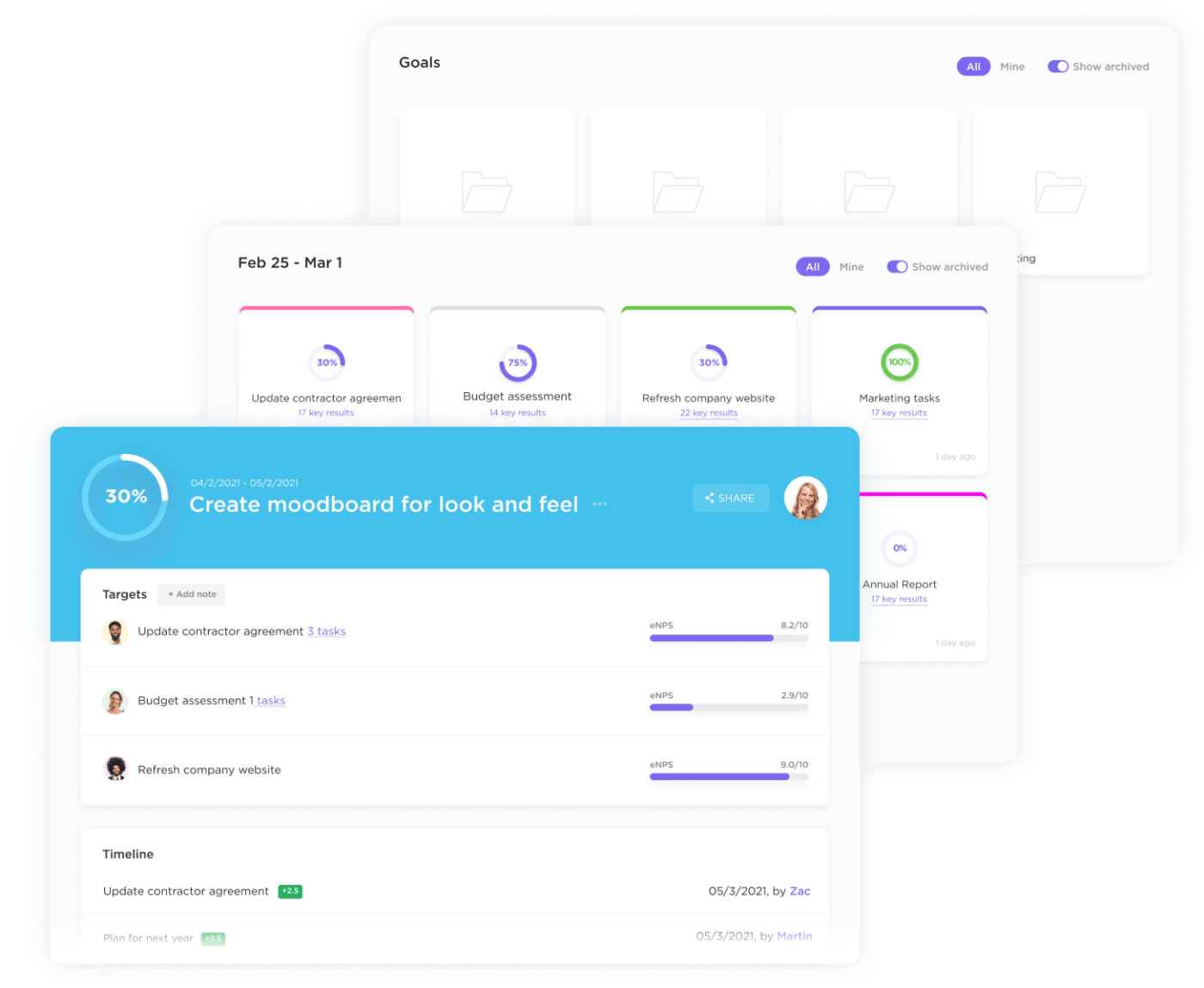
The evening routine is more like a wind-up of the day’s activities. This is when you will be contemplating quietly and reflecting on the strengths, weaknesses, opportunities, holdbacks, and unrealized potential.
At this stage, you will primarily:
Gradually start wrapping up the work activities so you can log off and maintain a healthy work-life balance. Sign out of your work email and other communication channels and focus on personal or professional development.
Although we’ve tried to cover all the critical activities around a day in the life of a project manager, do note that this timetable is purely indicative and not set in stone. As mentioned, the schedule is subject to the project status, industry requirements, and personal preferences. So, maintain flexibility to become a great project manager.
Although the position of a project manager is dynamic and thrilling, it comes with its fair share of challenges. Here’s a quick overview of some of the common challenges that come in the way of effective project management:
Scope creep is the unmitigated, unregulated, and unauthorized expansion of a project’s scope. It can result from a sudden change in project requirements, budgetary limitations, or an adjustment in timelines. Either way, handling scope creep is one of the toughest challenges of a project manager—and yet, it is one of the most unavoidable ones, seeing as how 33-37% of projects experience scope creep
A lack of or limitations on resources such as time, budget, or team member (talent) can pose a severe handicap in meeting the project demands per the desired schedule
Alongside resource constraints, project managers must also balance these against client expectations. They have to stay flexible enough to accommodate reasonable change requests but not too flexible lest it evolve into scope creep
Project Managers have to play a two-fold role—they have to be influential people managers and proficient time managers. However, managing human resources against deadlines and project schedules can be difficult, especially when dependencies or unforeseen issues arise
As it may be evident now, project management is a high-touch job. It involves constant communication with internal and external stakeholders, and you almost always have to be in an always-on state. Any breakdown in communication can have catastrophic consequences
Having to implement continuous process improvement methodologies, sustain communications, ensure regulatory and legal compliance, maintain collaboration, and lend direction can take a toll on anyone—even the best project managers—causing them to experience burnout
Although a project manager is at the helm of all affairs, team members may not truly view them as an authority due to a narrow view of things. Such resistance can make it tougher for them to exercise control, influence, and leadership over the team members
Adopting the right project management software and promoting it throughout the organization can be difficult. For one, several options are available in the market, and committing to one can be tough. At the same time, post-implementation involves extensive training and onboarding on the platform, not to mention the associated downtime during the learning curve
Bonus: Project Manager Resume Examples!
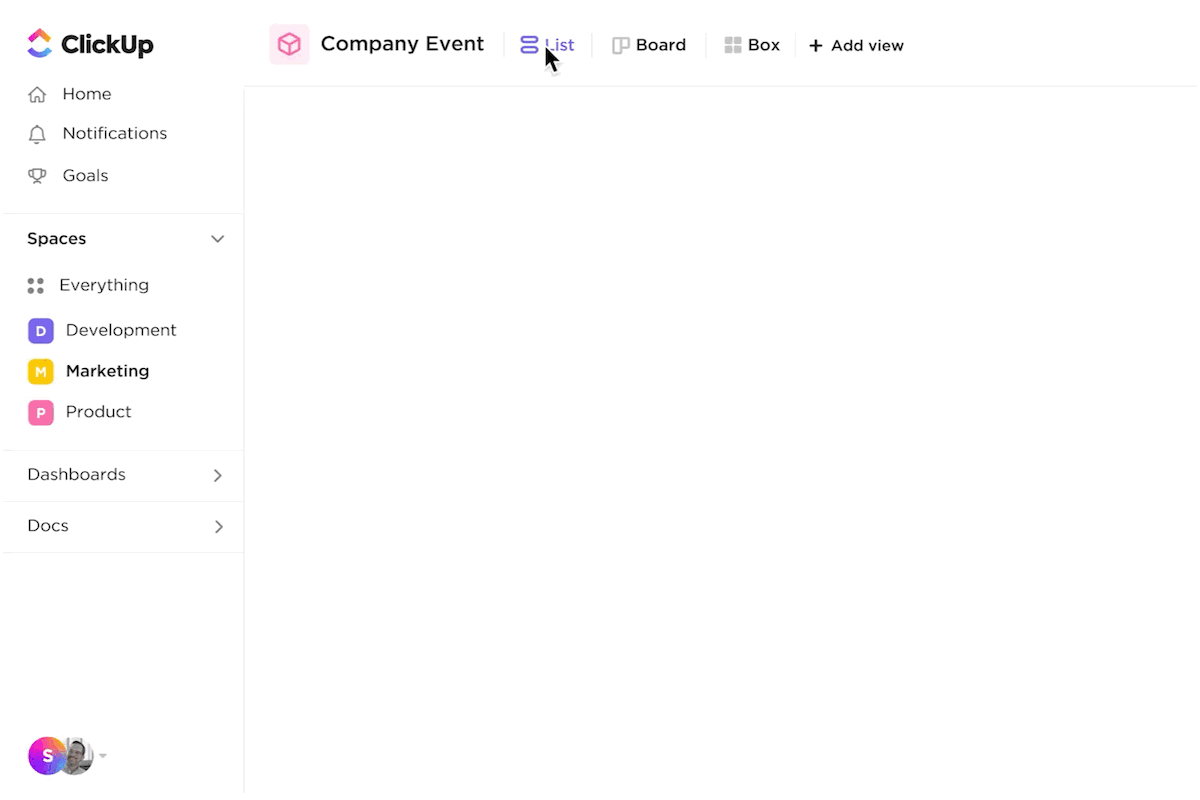
Surviving and thriving as a project manager involves effective planning, intentional communication, and dynamic agility. Apart from the routine project management tips for managers, we have compiled a few daily tips for organized project management:
Given the diversity of responsibilities, project managers may employ a series of tools to perform a wide range of tasks. These tools and platforms include
To develop a project development roadmap, populate a task list, assign tasks, and mark the progress therein. Maintain a log of the time spent on a task for effective time management and efficient resource allocation
To plan out hour-by-hour daily routines, followed by a schedule for the week, month, or year. It offers a high-level view of the deadlines and helps manage them
To engage with internal and external stakeholders. Such communication must occur synchronously and asynchronously
Document sharing platforms, preferably cloud-based, facilitate seamless collaboration and file sharing among team members
To gain a one-stop view of the entire project and the underlying metrics. Such dashboards should visually present data as Kanban Boards or Gantt Charts and update in real-time
To keep track of all the change requests and formalize the process of reviewing and approving such requests
To capture feedback from team members and other key stakeholders
A good project manager will use an assortment of such tools to streamline project management. However, an exceptional project manager will discard such disparate systems and go for a project management software that subsumes all of the above and more.
Here’s where we introduce ClickUp for project management.
ClickUp is the ultimate work management and productivity platform developed for project managers.
ClickUp features that make it the one app to replace them all:
Rich, interactive dashboards that present project-related data in different views. Get ready access to all your critical information

Delegate content generation to the powerful ClickUp AI that can do everything—from creating project plans to writing detailed reports

Conduct daily sprint meetings with your project team in a few clicks

For sharing all your project-related files and documents over a centralized platform
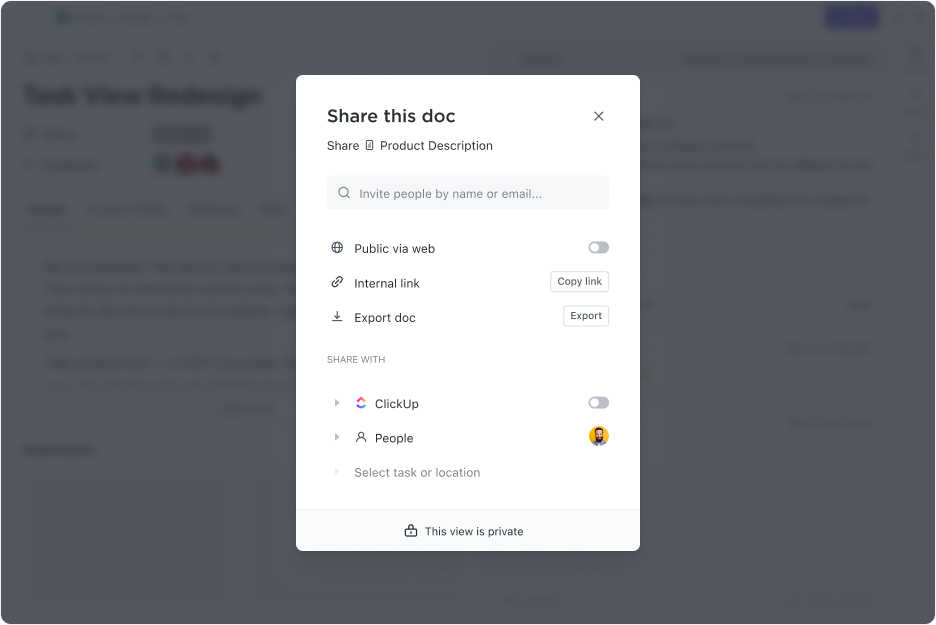
Make every second count with ClickUp’s time-tracking feature

Real-time communication with your team and other stakeholders
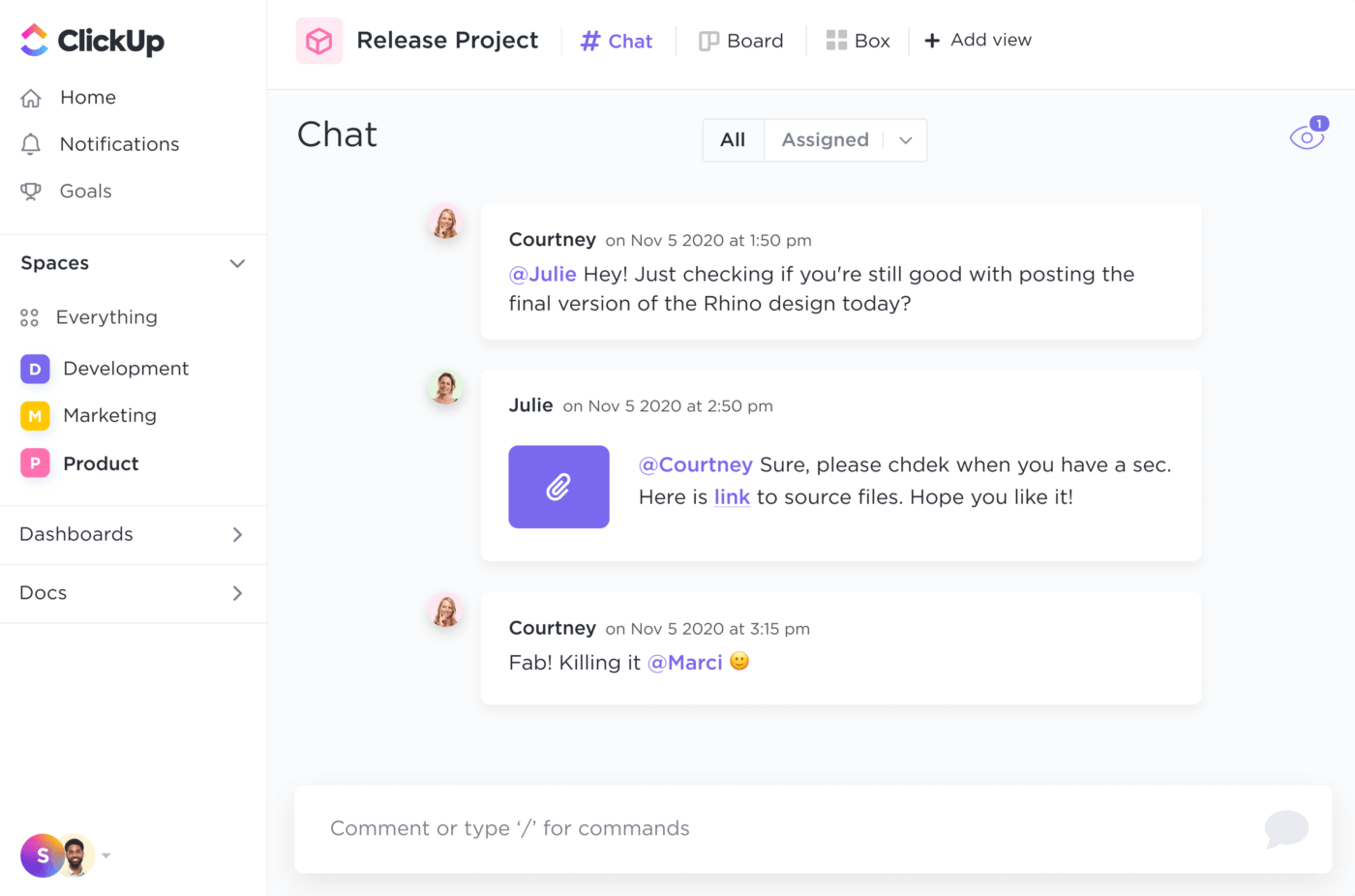
For brainstorming, bouncing ideas, collaborative analysis, or strategic decision-making with your team

Rich project management templates that ensure that you don’t have to start from scratch

Want to make ClickUp a part of your existing tech stack? No sweat, ClickUp offers native integration with all business and productivity apps

All this, and much more. Become a pro at project management with ClickUp!
Successful project managers are not born. They are a result of diligent planning followed by scrupulous implementation.
You can achieve most of the results by following an organized and structured schedule for your day-to-day activities. A day in the life of a successful project manager should start by catching up on all the emails and messages, planning for the daily tasks and deliverables, and catching up with your team.
Then, allow them to work autonomously and pitch in whenever you are needed. While staying available and accessible in the background for support and assistance, orchestrate all the main activities.
Document your day’s results, progress, and findings as the day ends. Collaborate, communicate, and control as and when the need arises.
Naturally, none would be possible without the right set of tools. Rather than opting for a buffet of tools and technologies, which are inefficient and expensive, consider consolidating everything.
A powerful project management tool such as ClickUp can check all the boxes and cater to all your business requirements.
© 2025 ClickUp